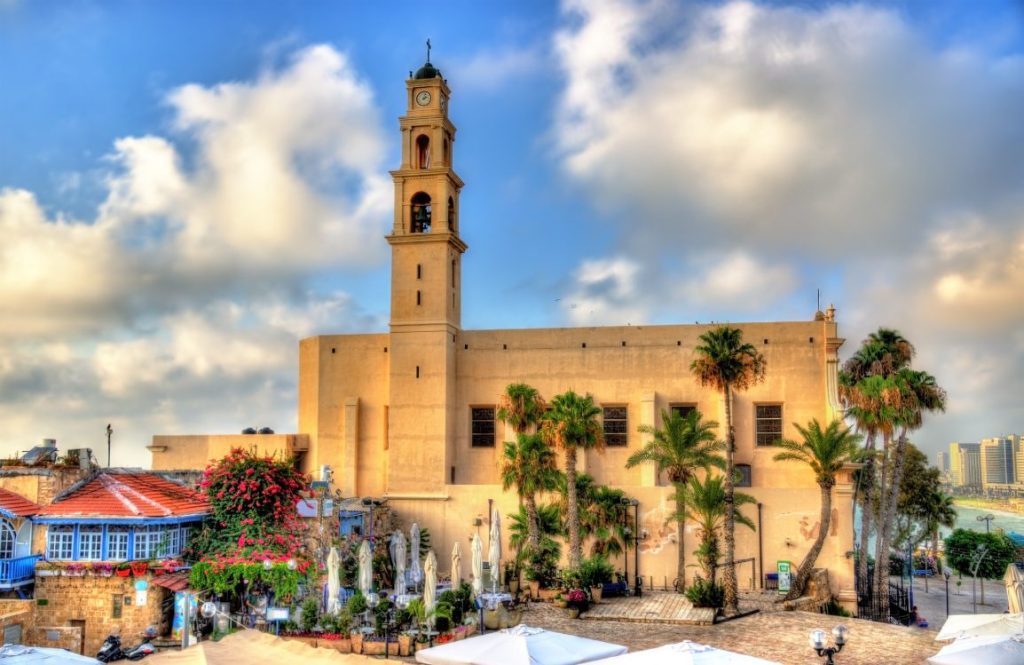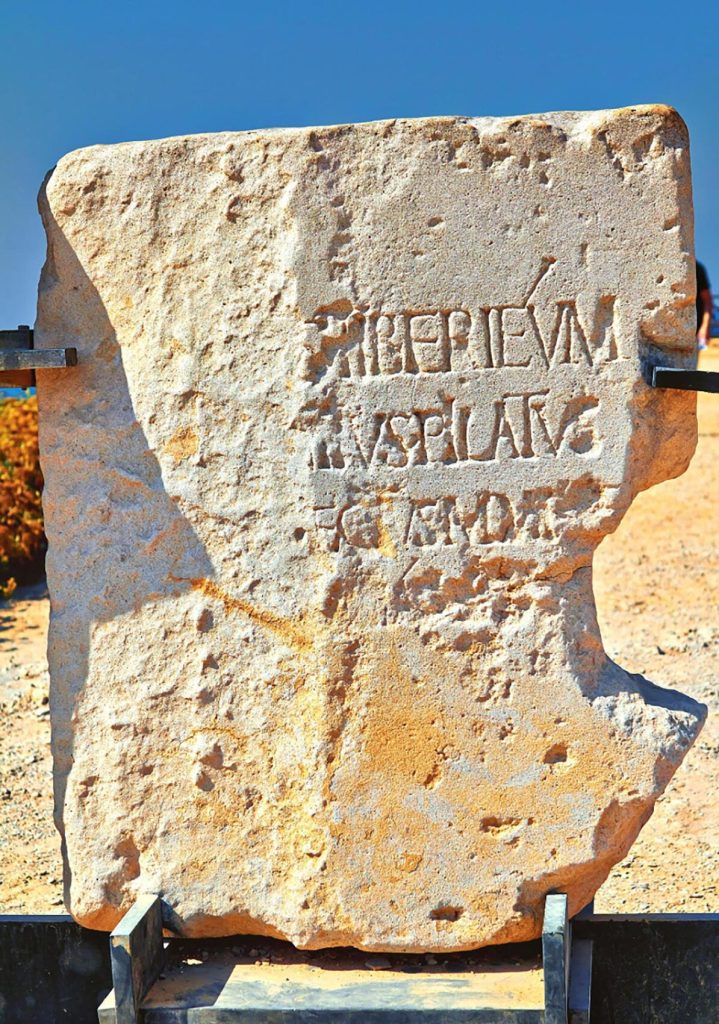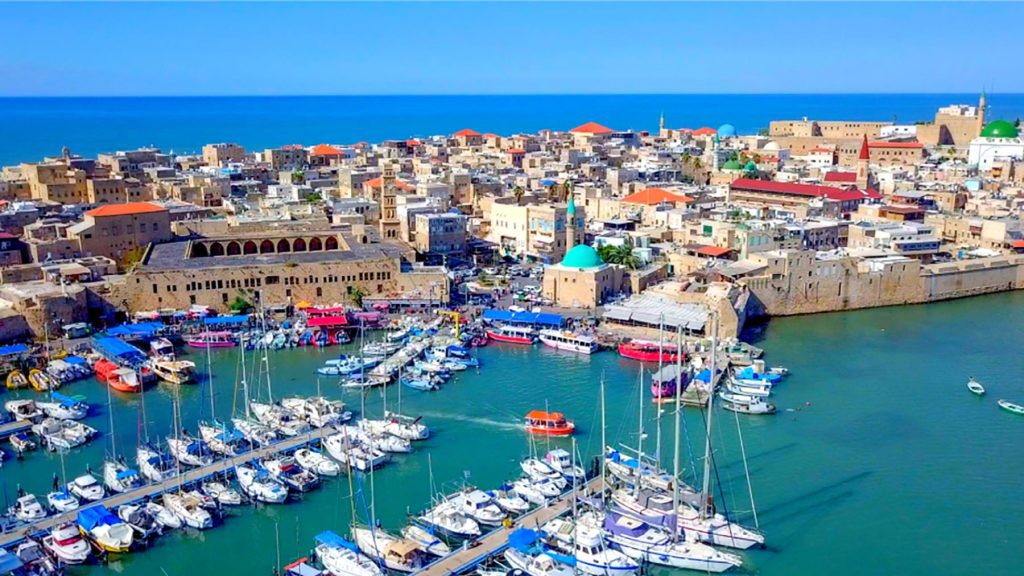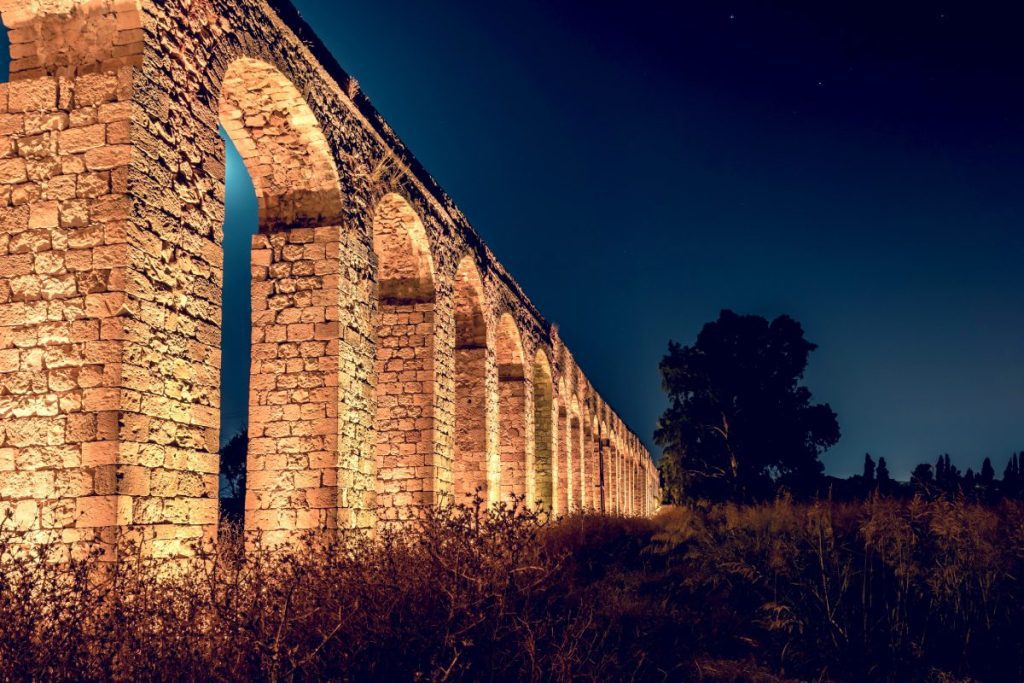At the present time, Jaffa is a cool place to visit filled with young people and good vibes. Firstly, the neighborhood still preserves the Ottoman style and feels like you are entering into a different realm. Moreover, Jaffa is where St. Peter had his vision on the rooftop of the house of Simon the Tanner (Acts 10:32); raised Tabitha From the Dead (Acts 9:36); Also where Jonah the Prophet set sail to Tarshis and got eaten by a whale (Jonah 1:3). Lastly, where King Solomon built his port (2 Chron. 2:16) on the Mediterranean Sea, bringing cedars from Lebanon to build the First Temple.

From Jaffa to Acre Tour: Caesarea Maritima – One of Christianity’s Early Center
As a private tour guide in Israel, Caesarea Maritima is one of my favorite sites to tour in Israel. Caesarea is located on the seacoast just northwest of Jerusalem. The city was built by Herod the Great and was the capital of Iudaea Province (6-132) and later the capital of Palestina Prima. It was there that Peter Baptized the Roman Centurion Cornelius, considered the first gentile convert.
Paul sought refuge here, once staying at the house of Philip the Evangelist. Also, it is said that he was imprisoned in Caesarea for two years (estimated to be 57-59). The Apostolic Constitutions (7.46) state that the first Bishop of Caesarea was Zacchaeus the Publican but the Catholic Encyclopedia claims that: “…there is no record of any bishops of Caesarea until the second century.”
Origen (d. 254) compiled his Hexapla there and held a famous library and theological school, St. Pamphilus (d.309) was a noted scholar-priest. St. Gregory the Wonderworker (d.270), St. Basil the Great (d.379), and St. Jerome (d. 420) visited and studied at the library, which the Persians later destroyed in 614 CE or the Muslims around 637 CE. So, in short, don’t skip Caesarea National Park!

From Jaffa to Acre Tour: Eusebius of Caesarea
Also known as Eusebius Pamphili, because of his close relations with Pamphilius, the founder of the major library in Caesarea. Eusebius was a very important historian of Christianity, exegete, and Christian polemicist. He became the bishop of Caesarea Maritima about 314 CE. Together with Pamphilus, he was a scholar of the Biblical canon, and he is regarded as a highly learned Christian of his time.
From Jaffa to Acre Tour: Why is Eusebius Important to Us?
Eusebius was a major historian of Christianity. Firstly, we have a relatively large portion of his writings. His comprehensive and careful excerpts from sources saved his successors the painstaking labor of original research. Hence, much has been preserved, quoted by Eusebius, which otherwise would have been lost
Moreover, he compiled the Onomasticon of the Holy Land, which is a directory of place names or “gazetteer”, a primary source that provides historical geographers with contemporary knowledge of 4th century Palestine and Transjordan. Probably, the most important book for the study of the Land of Israel in the Roman Period.
Lastly, in his Ecclesiastical History, Eusebius wrote the first surviving history of the Christian Church. It’s a chronologically-ordered account; based on earlier sources, complete from the period of the Apostles to his own epoch.
From Jaffa to Acre Tour: The Carmelite Monastery of Mukharaka
The Carmelite Order is a catholic order of monks, one of the oldest in the Holy Land, and named after Mt. Carmel. They were founded on Mt. Carmel more than 800 years ago, starting from a number of Crusaders who went to seclusion in the caves on Mt. Carmel.
Apart from the Carmelite Church on the site. There is an impressive viewpoint from the top of the structure. From there you can see all the way to the Mediterranean Sea and Mt Hermon to the north.
From Jaffa to Acre Tour: The Prophet Elijah & Mount Carmel
According to Christian tradition, a well-known biblical account concerning Elijah the Prophet occurred here. Here, Elijah decides to perform a contest between the Gods of Israel and the Baal.
Acre: The Recapture of the City by the Crusaders
After the Battle of Hattin on the 4th of July 1187 CE between the Crusaders states of the Levant and the forces of the Ayyubid sultan Saladin, on July 8th, 1187, Saladin forces arrived at Acre. Immediately the city capitulates to him, having heard of his victory at Hattin.
Old Acre Market

Due to the defeat at Hattin and the loss of Jerusalem on Sep-Oct 1187 CE, The Third Crusade was launched in 1189 CE. It was ultimately unsuccessful: Frederick I Barbarossa of Germany drowned before he even reached the Holy Land and Philip II Augustus of France returned home after a short period of time. Only Richard the Lionheart of England. He helped capture Acre and some smaller ports, only leaving after he concluded a peace treaty with Saladin.
On July 12th, 1191 CE Acre surrendered to Richard I the Lionheart of England, and Philip II Augustus of France. During the Siege, six archbishops, twelve bishops, forty earls, five hundred barons, and 300,000 soldiers are reported killed. Acre would remain in Christian hands until 1291.

From Jaffa to Acre Tour: Acre – The New Capital of The Kingdom of Jerusalem
After the Crusaders defeated Saladin and his forces, Acre became the capital instead of capturing Jerusalem. As a result, the Bishops of Jerusalem, like others from captured cities, moved to Acre and built new churches. So safe estimations count about 60,000 inhabitants in Acre at its peak, with sixty churches spread over an area estimated to be 100 Acres. Indeed, such a large number of churches in a small city like Acre is rare. So we can explain it by the aspirations each congregation had seeking representation in the city; that after the 3rd crusade had turned into the new capital of the Kingdom of Jerusalem.
Acre Aqueduct

Acre – The Maritime Gate To The Holy Land
Another reason for so many churches is that Acre was a port city that was the maritime gate to the Holy Land for many pilgrims from the West. So this way, the Germans could house in the Teutonic Quarter; the French and Belgians in the Church of Saint John; the Italians in the Venetian or Genoese Quarter, and so on.
An ecclesiastical guidebook from the time, bearing the name, ‘Perdons D’Acre,’ there is a list counting forty different churches, and it seems the list is incomplete. References to the many churches in 12th-13th century Acre can also be found in lists that the various Popes compiled and in documents found in churches in the west that had ties with Acre. Not all churches were monumental in size. Most of them were little chapels, and a few priests officiated there. For more about the topic you should read my post Things to Do in Acre!

